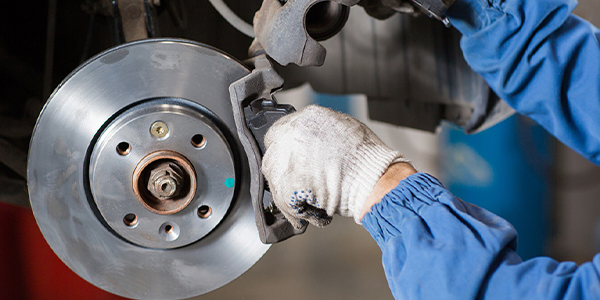By Andrew Markel
Editor
BRAKE & FRONT END Magazine
I have been getting a few phone calls lately from readers about bad smelling brakes after a brake service was performed. Most drivers may not know much about their vehicles, but they know when something does not smell right.
The customers who typically come back to the shop are not very happy. For shops it is a difficult phenomenon to explain. Also, the smell is typically gone by the time they get back to you, if they comeback at all. You know that there is nothing wrong with the vehicle mechanically, but you still have to set the customer’s concern to rest.
WHAT SMELLS?
The source of the smell is typically the brake pads. Explaining what’s happening is very difficult because you are treading on very complicated chemistry that is further politicized by the friction material manufacturers.
The term and concept that you want to avoid at all costs using is “burning off.” This is inaccurate and may cause the customer to become alarmed. Yes, there is heat involved when the bad smell is produced, but it is not oxidation or burning.
What is really happening is polymerization, or curing. This is a chemical process where smaller units are combined into larger and more stable units. It is like making an omelet. When heat is applied to the eggs, the omelet is formed. But, in the case of the friction material, the yoke and whites are the resins that hold the pad together.
The heat of braking causes the resins to polymerize and form stronger bonds. This is a good thing. The bad thing about this is when the resins polymerize, they create by-products in the form of gases that do not smell pleasant.
The bottom line is that the smell is not a bad thing in the majority of cases for new pads. What is important is that the pad must be heated in a controlled manner.
If the pad is heated too quickly or outside a certain heat range, the friction material could lose strength. The gases given off can cause brake fade, but if the pad is broken-in correctly, the gases do not pose a problem and brake fade conditions can be minimized in the future.
PREVENTING THE SMELL COMEBACK
This is the most difficult part of the story because I could be stepping on engineering and marketing people’s toes at the same time.
Just about every brake pad manufacturer has a specific break-in procedure. The break-in procedure beds the pads to the rotor and induces heat that starts polymerization on some pads.
Break-in procedures can vary from 10 to 20 stops from 30 mph to moderate driving with no heavy braking for the first 500 miles. How can anyone explain the discrepancy?
First of all, all brake pads are different in their formulation and manufacturing methods. One manufacturer may use a molding technique that may use less resin and more heat in the molding process. Or, one manufacture may use a special resin that may work great, but has a distinct smell when it is being polymerized. It is tough to make the generalizations or judge a pad on its recommended break-in procedure.
Just understand that if a manufacturer recommends a break-in procedure, follow it to the letter. Do not just pump the pedal a few times and back it out of the bay and hope that the customer has a sinus problem. Even if the pad specifies a 500-mile moderate braking procedure, take the car for a test drive.













